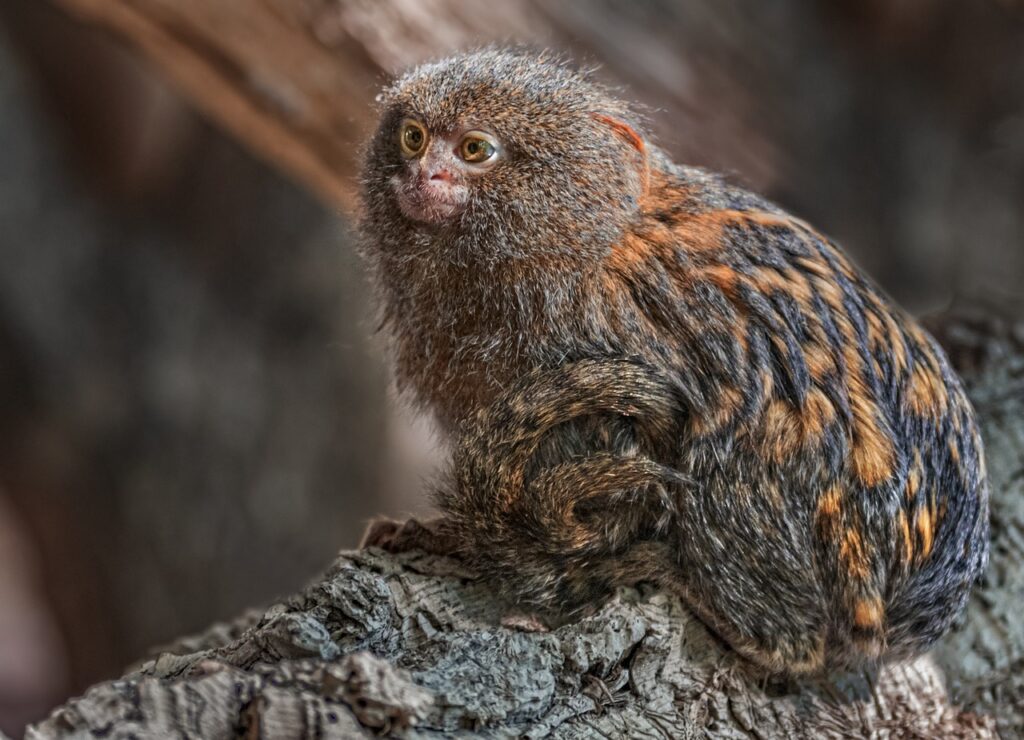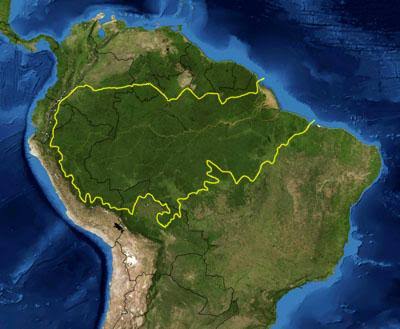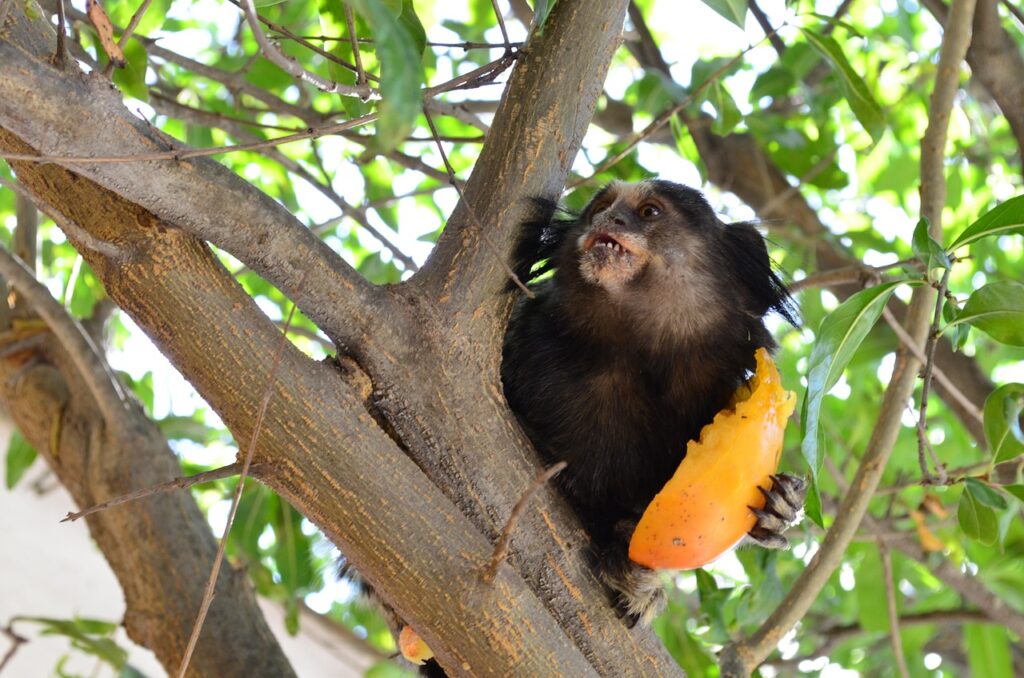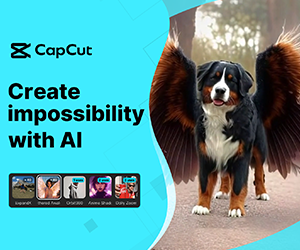Marmosets are small, social primates native to South America, belonging to the family Callitrichidae. These delightful creatures typically measure around 5 to 9 inches in length, with a long, tufted tail that aids in their acrobatic movements through dense forests. Marmosets exhibit a range of vibrant colors, often featuring a mix of brown, gray, and white fur.
 Pin
Pin Image by edmondlafoto from Pixabay
Highly social animals, marmosets live in small family groups that strengthen their community bonds. They communicate through a variety of vocalizations, including chirps and whistles, to maintain group cohesion and signal alarm. Marmosets primarily feed on fruits, insects, and small vertebrates, showcasing their adaptability in seeking diverse food sources.
Their playful behaviors and curious nature have made them popular among animal enthusiasts. However, potential pet owners should consider their complex social needs and the challenges of providing appropriate care in captivity. Understanding marmosets is essential for their conservation and welfare.
Table of Contents
The Different Species of Marmosets
Marmosets comprise several fascinating species, each displaying distinct behaviors and physical characteristics. The Common Marmoset (Callithrix jacchus) is one of the most widely recognized, known for its adaptability and social nature. It features a small size, with a bushy tail and predominantly white and brown fur.
The White-Tufted Ear Marmoset (Callithrix geoffroyi) stands out for its striking white ear tufts and is often found in the eastern regions of Brazil. This species engages in cooperative breeding, where multiple adults care for the young, highlighting their social structure.
 Pin
Pin Image by ringtailed from Pixabay
The Black-Tufted Marmoset (Callithrix penicillata) showcases a darker coat with notable black tufts near its ears. This species is also recognized for its distinctive vocalizations, which play a crucial role in group dynamics.
 Pin
Pin Image by Robson veneziani from Pixabay
Each species’ unique traits contribute to the rich diversity of marmosets, emphasizing their importance in their ecosystems and the need for their conservation.
Physical Characteristics of Marmosets
Marmosets are notably small primates, typically weighing between 5 and 12 ounces, which makes them one of the smallest monkeys in the world. Their compact size allows them to navigate easily through their arboreal habitats. Marmosets have large, expressive eyes that grant them excellent vision, crucial for spotting predators and navigating their environment. Their fur is soft and often features a combination of colors, including shades of brown, gray, and white, contributing to their appealing appearance.
A distinctive feature of marmosets is the characteristic tufts of hair on their ears, which can vary by species. For instance, the Common Marmoset has prominent white tufts, while others, like the Black-Tufted Marmoset, have striking black tufts. These ear tufts not only enhance their charm but also play a role in their social interactions, helping them communicate with one another. Overall, their unique physical characteristics make marmosets captivating animals.
Habitat and Distribution of Marmosets
Marmosets primarily inhabit dense tropical rainforests in Brazil, Colombia, and neighboring countries, making these lush ecosystems their natural home. They thrive in the upper canopies of the forest, where they can easily access a variety of foods, including fruits, insects, and tree sap, which is a staple in their diet. The canopy provides essential safety from predators, such as larger birds and mammals, allowing marmosets to move and forage with relative security.
 Pin
Pin Image from study.com
Their social structures are often influenced by their habitat, as marmosets live in small family groups that work together to locate food and care for young. The diverse vegetation in these regions not only supports their diet but also offers the necessary cover and nesting sites. Unfortunately, habitat destruction due to logging and agriculture poses significant threats to their populations, making conservation efforts crucial for preserving these unique primates in their natural environments.
Diet and Feeding Habits of Marmosets
Marmosets are omnivorous creatures, showcasing a diverse diet that primarily consists of fruits, insects, and small animals. Their foraging habits are well-adapted to the tropical rainforest environment, where they take advantage of the rich variety of food sources available. Fruits provide essential vitamins and sugars, while insects contribute protein, critical for their growth and energy.
 Pin
Pin Image by Robson veneziani from Pixabay
One of the unique aspects of marmosets’ feeding habits is their consumption of tree sap. Using their sharp incisors, they create small holes in the bark of trees, allowing the nutrient-rich sap to ooze out. This sugary substance serves as a vital energy source, especially during periods when other food is scarce. Marmosets are also known to exhibit cooperative behaviors when feeding, often working together to locate and access food. Their flexible dietary habits enable them to adapt to environmental changes, although habitat loss poses challenges to their food availability.
Social Structure and Behavior of Marmosets
Marmosets exhibit a fascinating social structure centered around family groups, typically composed of a breeding pair and their offspring. This close-knit setup promotes cooperative behaviors essential for their survival. Interestingly, marmosets follow a matriarchal system, where the females often take on leadership roles within the group.
 Pin
Pin Image by National Geographic via Pinterest
The dominant female plays a crucial role in decision-making, guiding the group’s movements, foraging strategies, and overall social dynamics. She also often has primary responsibility for caring for the young, which includes grooming and teaching them vital survival skills. Group cohesion is reinforced through vocalizations, grooming, and playful interactions, which strengthen social bonds among members.
These social structures enhance the marmosets’ ability to protect themselves from predators and efficiently find food, demonstrating the importance of their cooperative behaviors. While family groups are typically stable, they may experience changes as offspring mature and eventually disperse to form new groups.
Communication Among Marmosets
Marmosets communicate through a rich combination of vocalizations, body language, and facial expressions. Their diverse calls serve multiple purposes, such as signaling alarm, indicating food availability, and facilitating social interactions among group members. For instance, distinct alarm calls alert others to potential threats, while specific calls can attract attention to food sources. Additionally, body postures and facial expressions enhance their communication, helping convey emotions and intentions. This complex communication system is essential for maintaining group cohesion, coordinating activities, and ensuring the well-being of their close-knit family units, highlighting the social sophistication of these small primates.
Breeding and Offspring
Marmosets typically give birth to twins, reflecting their unique reproductive strategy that enhances the survival of the young. This twin-bearing approach allows both parents to invest in the care and upbringing of their offspring, fostering a collaborative environment. The responsibilities of feeding, grooming, and socializing the young are often shared, promoting strong family bonds. Older siblings also play a crucial role in caring for the twins, encouraging a supportive social structure. This cooperative parenting not only ensures the well-being of the offspring but also helps integrate them into the group, preparing them for future independence within their social community.
Conservation Status
While many marmoset species are not currently classified as endangered, they face significant threats primarily from habitat loss and illegal pet trade. Deforestation and urbanization disrupt their natural environments, making it challenging for these primates to thrive. Additionally, the illegal trade of marmosets as pets further endangers their populations and disrupts social structures. To ensure their survival in the wild, robust conservation efforts are essential. These initiatives include habitat protection, legal regulations to combat illegal trade, and public awareness campaigns. By addressing both habitat preservation and the ethical concerns of pet ownership, we can help safeguard marmosets for future generations.
Marmosets in Captivity
Marmosets are increasingly kept as pets, but they require specialized care to thrive in captivity. Understanding their social needs is crucial, as these primates are highly social creatures that can become lonely if isolated. Their diet must be carefully managed, consisting of a variety of fruits, insects, and specialized pellets to ensure proper nutrition. Regular veterinary check-ups are essential to monitor their health, as marmosets are prone to certain diseases. Providing an enriched environment with mental stimulation and opportunities for social interaction is vital for their well-being, ensuring that they lead happy, healthy lives in captivity. Proper education is key for potential owners.
Conclusion
Marmosets are captivating creatures that provide valuable insights into primate behavior and ecology. Their fascinating social structures, communication methods, and dietary habits reflect the complexities of their natural lives. By understanding their unique characteristics and the challenges they face, such as habitat loss and illegal trade, we can enhance conservation efforts. Supporting initiatives that protect their environments and raise awareness about responsible pet ownership contributes to their survival. Appreciating these small wonders of nature goes beyond admiration; it involves a commitment to ensuring their continued existence in the wild, enriching our understanding of biodiversity and the importance of preserving ecosystems.
FAQs for "Life in the Canopy: The Marmoset Experience"
Marmosets are small, New World primates belonging to the family Callitrichidae. They are known for their unique physical features, such as their long tails, large eyes, and colorful fur. There are several species of marmosets, including the common marmoset and the golden lion tamarin.
Marmosets inhabit the tropical rainforests of South America, primarily in countries like Brazil, Bolivia, and Paraguay. They are arboreal animals, meaning they spend most of their time in the trees.
Marmosets are omnivorous. Their diet primarily consists of fruits, insects, small vertebrates, and tree sap. They have specialized teeth that help them access sap from trees, which is a vital part of their diet.
Marmosets communicate through a combination of vocalizations, facial expressions, and body language. They have a diverse range of calls that serve different purposes, such as alerting others to danger or coordinating social interactions.
Yes, marmosets are highly social creatures. They live in family groups that typically consist of a breeding pair and their offspring. Social bonds are strong, and they often groom each other to strengthen relationships.
Marmosets face significant threats from habitat destruction due to deforestation, as well as hunting and the illegal pet trade. Pollution and climate change also impact their natural habitats, further endangering their populations.
You can support marmoset conservation by raising awareness about their plight, supporting wildlife protection organizations, and advocating for sustainable practices that preserve their natural habitats. Avoiding the illegal pet trade is also crucial for their survival.
While marmosets may seem appealing as pets, they are wild animals with complex social and environmental needs. Keeping them in captivity can lead to behavioral issues and is often illegal in many places. It’s essential to support their conservation in the wild instead.

































